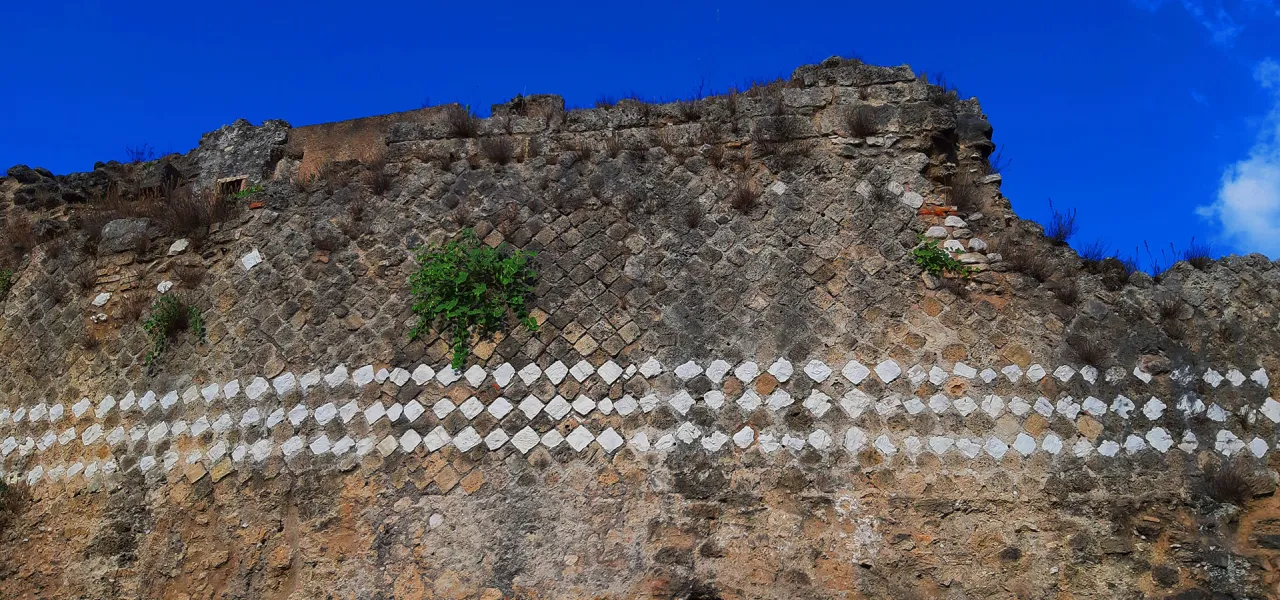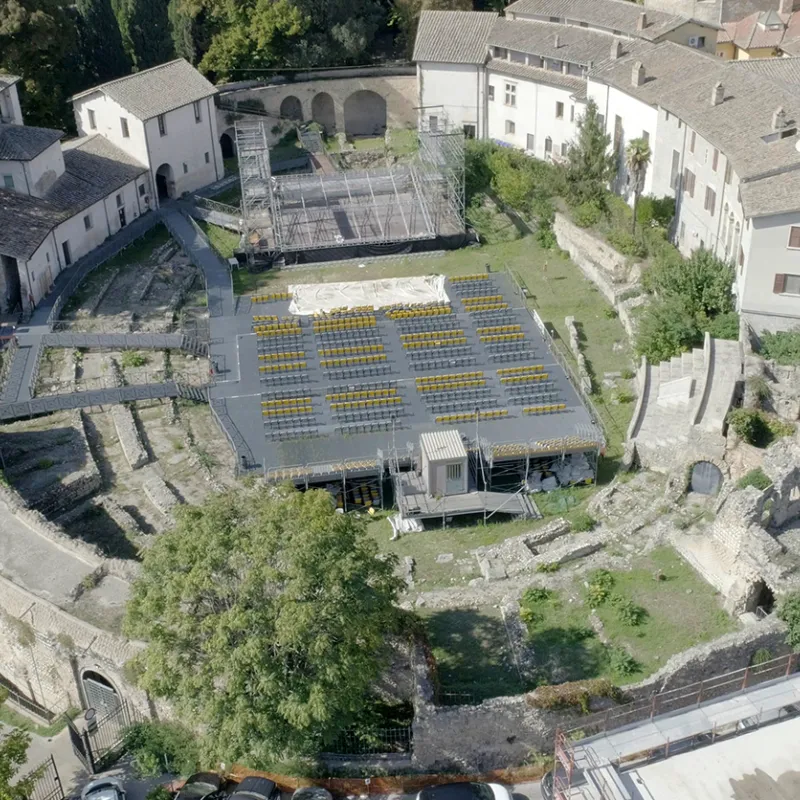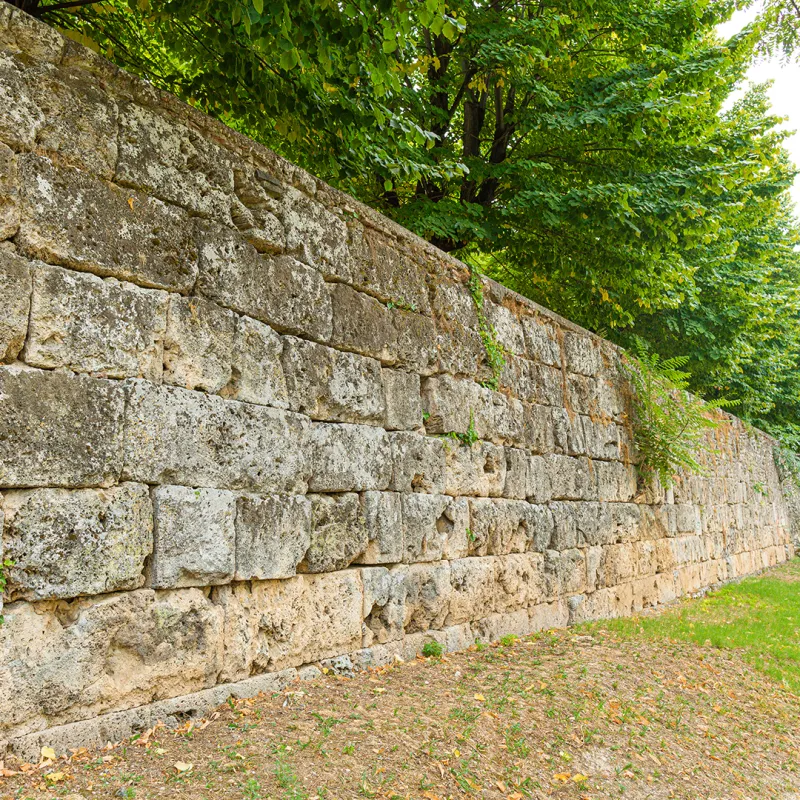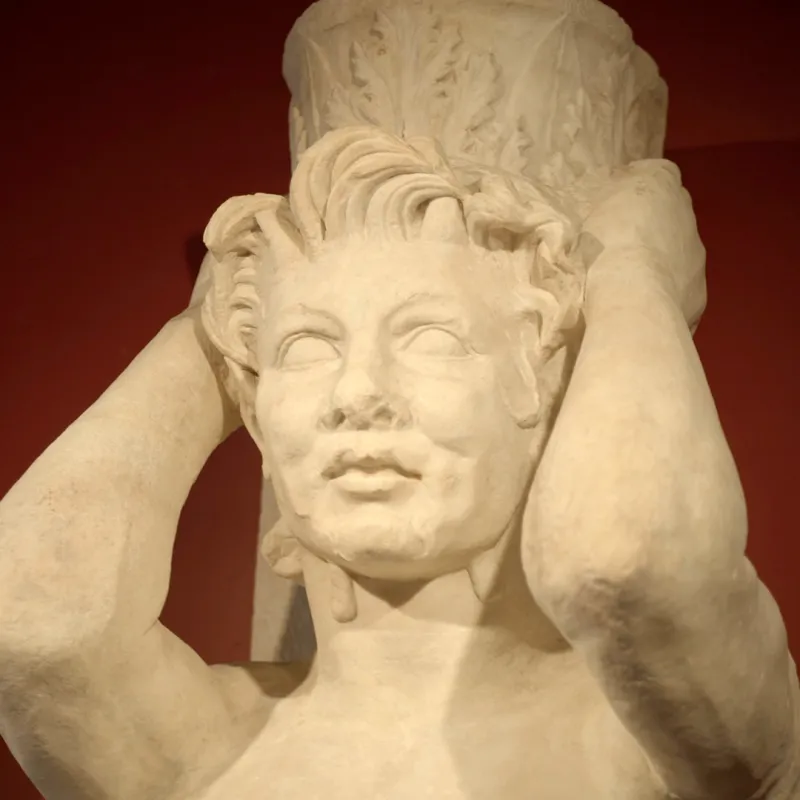Roman Terni
The town of Terni, called Interamna Nahars in Roman times, town between two rivers, like many other municipalities was monumentalized starting from the Augustan Age and within the 1st cent. A.D. reached its richest and most refined heights.

The urban area was delimited by an opus quadratum wall, still partially visible between Via Giannelli and Via delle Mura, with four entrance gates.
Via Flaminia crossed the urban centre constituting the “cardo maximus” (the current Via Roma–Corso Vecchio axis) that crossed the “decumanus maximus” (Via Garibaldi–Via Cavour) at today’s Repubblica Square, the ancient forum of the Roman town. Inside the two main axes, neighbourhoods and roads developed and the main monuments rose up, of which the amphitheatre in opus reticulatum is the only one partially intact and visible.
There are also traces of spas, temples, dwellings and a theatre, of which Latin actors mention its existence through various inscriptions preserved in the Archaeological Civic Museum.
THE STAGES OF THE ITINERARY

One of the most significant pieces of evidence of the rich historical stratification of Terni and the most imposing preserved monument from the Roman era of the city, called Interamna, is the amphitheatre, of which remarkable remains can be admired near the Cathedral.

Until the second half of the 19th century, the city of Terni was entirely enclosed by the Nera River, the Serra stream, and the Romanesque-medieval city walls that stretched almost 3 km to the south.

The archaeological exhibition is divided into two different sections, pre-Roman and Roman, which tell the story of what was to become the centre of Interamna Nahars in the Roman period, the current city of Terni.